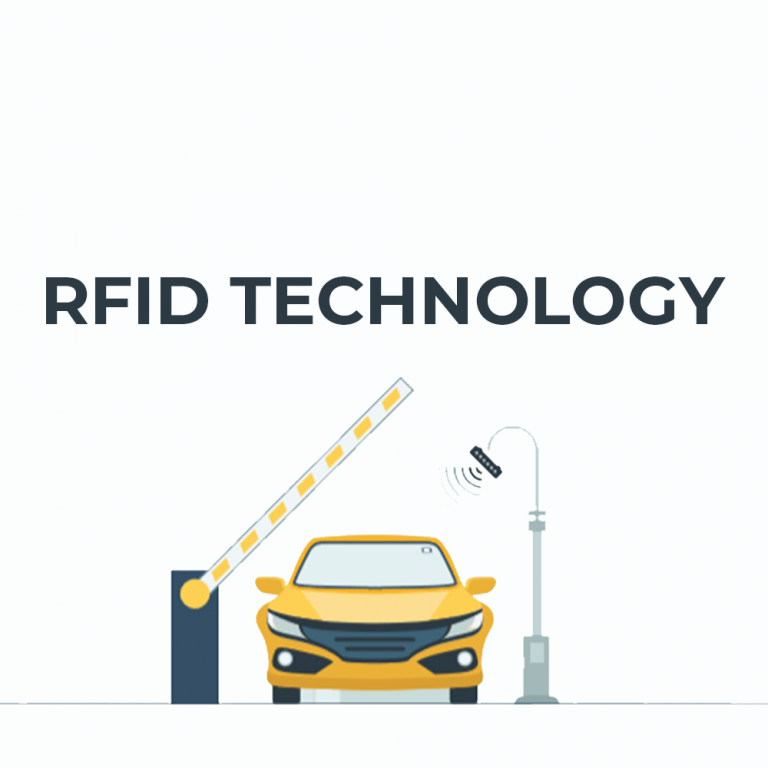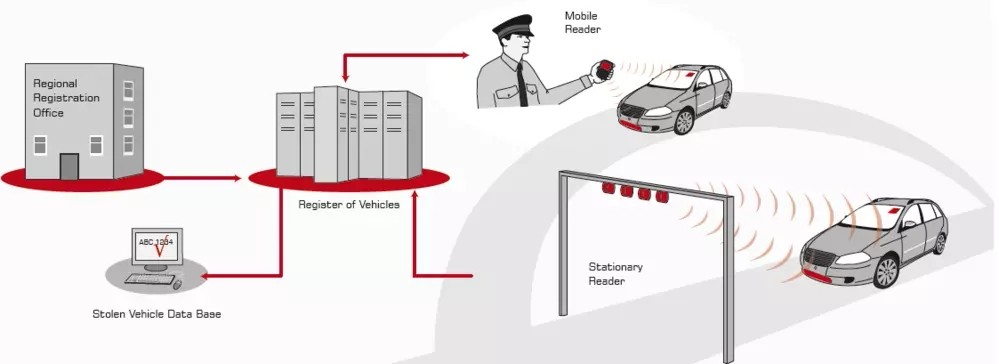Managing vehicle access at a gated community, office park, or parking facility can be a daily challenge. Long lines at entry points, forgotten keys, and unauthorized vehicles slipping through are common frustrations. Fortunately, modern technology offers a smarter solution: car RFID tags. These small but powerful tools are transforming how we control access, making entry faster, safer, and more reliable.
This guide explains how car RFID tags work, their key benefits, and how to use them effectively in real-world settings.
If you’ve ever tapped a key fob to enter a building or drive through a toll booth without stopping, you’ve likely used RFID technology. A car RFID tag is a compact electronic device—often shaped like a sticker or small card—that’s attached to a vehicle. It stores a unique identification code and communicates wirelessly with a reader system.
Most tags are placed on the windshield or license plate, where they can be easily scanned as the car approaches a gate or barrier. Unlike traditional keys or access cards, RFID tags don’t require physical contact. This makes them ideal for hands-free, automatic access control.
Whether used in residential communities, corporate campuses, or parking garages, car RFID tags provide a seamless way to verify authorized vehicles and keep unwanted ones out.
To understand how RFID improves access control, it helps to know the main parts of the system. A typical setup includes four key components that work together smoothly.
First is the RFID tag, which is attached to each authorized vehicle. It contains a microchip and antenna that transmit data when activated.
Next is the RFID reader, installed at entry and exit points. It sends out a radio signal that powers nearby tags and receives their ID information.
The control panel acts as the system’s brain. It receives data from the reader and checks it against a stored database to decide whether to grant access.
Finally, the backend database and management software stores all vehicle records, access rules, and entry logs. This allows property managers to add or remove users, monitor activity, and generate reports—all from a single interface.
Together, these components create a reliable and automated access solution.
Now that we’ve covered the parts, let’s walk through how the system operates in real time.
As a vehicle approaches the gate, the RFID reader emits a low-power radio signal. When the tag on the car enters this signal range, it’s instantly activated—especially if it’s a passive tag, which uses the reader’s energy to power up.
The tag then sends its unique ID back to the reader. This information is passed to the control panel, which checks it against the database of approved vehicles.
If the ID matches and the vehicle is allowed to enter at that time, the system automatically triggers the gate or barrier to open. At the same time, it logs the event—recording the time, date, and vehicle ID for future reference.
The entire process takes just seconds, allowing drivers to pass through without stopping, rolling down windows, or fumbling for keys. It’s this speed and convenience that makes RFID vehicle access control so effective in busy environments.
Not all RFID tags are the same. The two main types—passive and active—serve different needs and budgets.
Passive RFID tags have no internal battery. Instead, they draw power from the reader’s signal when nearby. They’re inexpensive, long-lasting, and perfect for most access control uses, such as apartment complexes or parking lots. Their range is typically 1 to 3 meters, which works well for slow-moving or stopping vehicles.
Active RFID tags, on the other hand, contain a small battery that powers the signal. This allows them to be read from much farther away—up to 10 meters or more. They’re ideal for high-speed entrances or large industrial sites where vehicles don’t slow down. However, they cost more and may need battery replacement after a few years.
For most property managers, passive RFID tags for cars offer the best balance of performance, durability, and cost.
Switching to RFID access brings several clear advantages over older methods like keys, codes, or manual checks.
Efficiency improves dramatically. Vehicles move through gates quickly, reducing wait times and preventing traffic jams during peak hours.
Security is stronger. Each tag has a unique, hard-to-copy ID, making it difficult for unauthorized users to gain access. Plus, the system automatically logs every entry and exit, giving staff a clear record of who came and went.
Anagement becomes easier. Adding or removing a vehicle takes just a few clicks in the software. There’s no need to collect physical keys or worry about lost fobs.
User experience gets better. Residents and employees enjoy a smooth, hassle-free entry process—especially in bad weather or at night.
Long-term costs go down. With less wear on gates and fewer staff needed for monitoring, RFID systems pay for themselves over time.

While RFID systems are reliable, they’re not without challenges. Being aware of these issues helps ensure smooth operation.
One concern is tag damage or failure. Although most tags last 3 to 5 years, extreme weather, windshield repairs, or accidents can affect performance. To prevent access issues, regularly inspect tags and keep spare ones on hand.
Another limitation is visitor access. You can’t safely give permanent RFID stickers to guests, as they might be reused later. Instead, combine your RFID system with a temporary access solution, such as a mobile app, QR code, or one-time PIN linked to license plate recognition.
Occasionally, signal interference can cause read failures—especially if multiple vehicles arrive at once or if metal parts block the signal. Proper installation of readers, at the right height and angle, helps minimize this risk.
Lastly, there’s the initial setup cost. But when you factor in long-term savings on labor, maintenance, and improved security, the investment is usually worthwhile.
To get the most out of your RFID car tag system, follow these practical tips.
Start by assessing your site’s needs: How many entry points? How many vehicles? What level of security is required?
Choose the right tag type—most communities do well with passive tags. Then, install readers in clear, unobstructed locations, ideally before the gate, so vehicles don’t need to stop.
Set up your database carefully. Enter accurate vehicle and owner information, and define access rules (like time windows for service vehicles).
Train your staff to use the management software, handle tag registration, and respond to common issues.
And don’t forget your users. Educate residents or employees on where to place the tag and what to do if it stops working.
A well-planned rollout leads to higher adoption and fewer problems down the road.

RFID is not standing still. It’s increasingly being combined with other smart technologies to create even more advanced access systems.
For example, many modern setups now integrate RFID with license plate recognition (LPR). This dual-layer approach adds extra security—both the tag and the plate must match before access is granted.
Mobile integration is also growing. Some systems allow users to store virtual RFID credentials on their smartphones using NFC or Bluetooth, eliminating the need for a physical tag.
In smart cities and connected communities, RFID data can feed into larger platforms for parking management, traffic analysis, and energy use tracking.
As the demand for seamless, secure access grows, RFID in vehicle access control will continue to evolve—becoming smarter, more flexible, and more user-friendly.
In today’s world, convenience and security go hand in hand. Car RFID tags offer both, making them a top choice for managing vehicle access in residential, commercial, and industrial settings.
They work quietly and reliably, reducing delays, cutting costs, and improving the experience for everyone involved. Whether you’re a property manager, security officer, or everyday driver, RFID technology makes daily entry simpler and safer.
By understanding how these systems work, weighing their pros and cons, and following best practices, you can implement a solution that truly meets your needs.
The future of access is here—and it starts with a small tag on your windshield.
Do you need a professional team to provide you with solutions? Contact us for a quote
Let us discuss it with you.